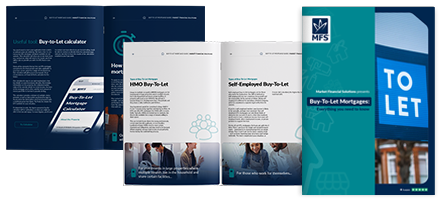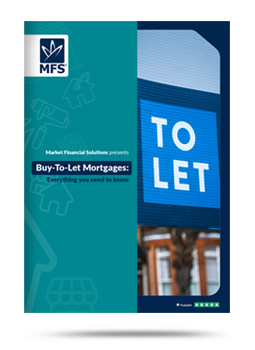Market Financial Solutions are a bridging loan and buy-to-let mortgage provider and are not legal, financial, investment or tax advisers. This document is for informational purposes only and does not, and should not be considered, to constitute legal, financial, investment or tax advice or be relied upon by any person to make a legal, financial, investment or tax decision. Therefore, Investors are encouraged to seek appropriate professional advice. The information in this content is correct at time of writing.

For brokers in the buy-to-let mortgage space, the phrase ‘interest coverage ratio’ (ICR) is an incredibly important one to understand.
When it comes to risk management, a loan’s ICR is a key metric for lenders. It’s also an essential tool for brokers looking to ensure that their client’s investment property revenues will be high enough to pay the interest on their loans.
In this blog, we will define ICR, outline how to calculate interest coverage ratio, and explore the ways in which Market Financial Solutions can help brokers improve their clients’ ICR.
What is interest coverage ratio (ICR)?
Before we explore how to calculate interest coverage ratio, let’s define it.
The interest coverage ratio, often abbreviated to ICR, serves as a gauge indicating whether a borrower can meet their debt obligations, expressed in percentage terms. Companies or businesses often use it when calculating business loans. It is also relevant for landlords in the buy-to-let (BTL) property sector when applying for loans or mortgages.
For BTL landlords, ICR reveals the portion of gross rental income required to cover expenses like mortgage repayments, taxes, property maintenance, and other costs.
It allows lenders to make sure that borrowers can afford their repayments, and is a crucial aspect of their risk management processes.
How to calculate interest coverage ratio
ICR is calculated by dividing a borrower’s total income, before interest and tax, by the total amount of interest on all of their outstanding debts. For BTL landlords, brokers must compare their clients’ annual rental income to their mortgage interest rates and monthly repayments.
What is the interest coverage ratio formula?
Fortunately for those wondering how to calculate interest coverage ratios, there is a standard formula[1] for this calculation:
ICR = EBIT (Earnings before interest & taxes) / Interest Expense
You would then multiply the ICR by 100 in order to express it as a percentage.
Example: Let’s say that a BTL landlord has an EBIT (Earnings Before Interest and Taxes) of £100,000 and an annual interest expense of £20,000.
ICR = 100,000 / 20,000.
In this scenario, the BTL landlord would have an ICR of 5, which would be expressed as 500%. This means that their earnings are five times the amount of their interest expenses – a healthy financial position.
What is a good interest cover ratio?
Typically, the higher a borrower’s ICR, the better. It indicates they are in a strong financial position from which they can pay any interest charges that their loan or mortgage might accrue.
For brokers dealing with buy-to-let (BTL) landlords or investors, a high-interest coverage ratio can be particularly advantageous. It signals that their clients have the capacity to meet their monthly repayments, and reduces the risk of default.
Typically, lenders will set interest coverage ratios of between 125% and 145%[2]. At Market Financial Solutions, our ICR will be a minimum of 125% for our fixed loans, and 130% for tracker loans.

How to improve a borrower’s interest coverage ratio
For brokers looking to improve their clients’ ICR, they need to find ways in which they can reduce their clients’ interest expense. It’s unlikely they’ll be in a position to help boost their client’s income before tax.
Interest coverage ratio options with Market Financial Solutions
Most lenders do a rigid stress test and loan size calculation to ensure the rent far exceeds the interest payment.
At Market Financial Solutions, we look at the rent income versus interest due over the initial two years of the loan. The rent is what it is, but it can create a higher interest cover ratio by deferring some of the interest due until the loan is redeemed (akin to using some of the equity in the property). So, our clients can increase their loan size as long as the resulting ICR remains 125% or more.
Our underwriters take a commercial, fast, and flexible view to try and lend more than most. They can also take surplus portfolio rent, salary or consider the wider wealth position of applicants.
This means that brokers have three options for their clients:
Option 1 – Roll Up Months of Interest
- This option means that borrowers pay nothing at the start for 1 to 9 months, and any interest accrued in that time is paid at redemption of the loan.
- This gives BTL landlords time to find a tenant, carry out light renovations, improve their EPC, or borrow more.
- This option boosts ICR because we compare the remaining months of interest against 24 months of rent.
- It also means we can increase the loan size as long as interest cover ratio remains above 125%.
Option 2 – Deferred Interest
- This option allows borrowers to deduct 2% from the rate (e.g. 9.49% becomes 7.49%), and any interest accrued during the loan term is paid at redemption.
- It reduces monthly interest payments, which can make them more affordable, help cash flow, and potentially enable borrowers to borrow more.
- This option boosts ICR as we compare reduced interest payments to rent.
- Again, we can increase the loan size as long as ICR remains above 125%.
Option 3 – Top Slicing & Underwriter Review of Savings
- This option allows borrowers to utilise their surplus salary, large savings/liquid assets or portfolio excess rent to ‘boost’ rental income.
- Our underwriters may then be able to use this wider wealth to assess resilience against rental voids, tax, maintenance, etc.
- It will require evidence but doesn’t require capitalised interest
- Borrowers are allowed up to +20% of monthly rental income.
For more information about Market Financial Solutions’ ICR boosting options, please refer to this handy factsheet.
Of course, boosting interest coverage ratio via different interest plans is just one of many tools at our disposal. At Market Financial Solutions, we underwrite all our BTL and bridging deals from day 1. Meaning, from the outset, our underwriters look for reasons to lend, rather than find excuses not to.
We’re there for landlords and property investors who may be unsure of where they stand on affordability. Call us to find out more.
The Complete Guide to
Buy-to-Let Mortgages
Everything you need to know
- Fundamentals
- Different mortgage types
- Useful tools
- Industry stats & more






